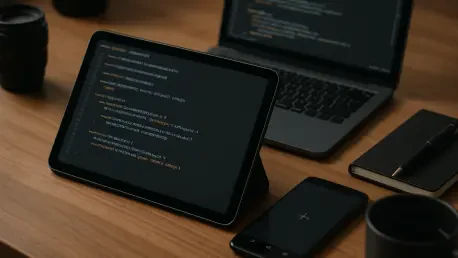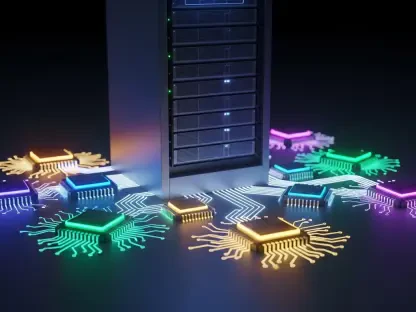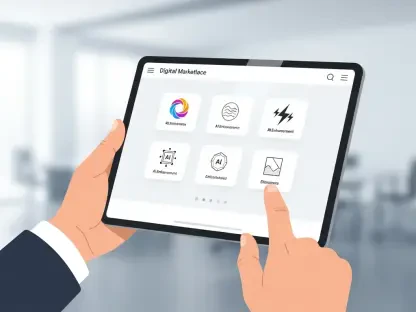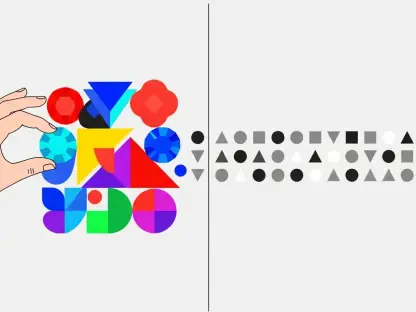In a rapidly evolving digital landscape where geospatial technology plays an increasingly vital role, the latest release of ArcGIS Maps SDKs for Native Apps version 200.8 emerges as a game-changer for developers and GIS professionals alike. This significant update, rolled out by Esri, introduces a suite of powerful features, performance enhancements, and a long-term support (LTS) commitment that promises stability across diverse platforms such as .NET, Flutter, Kotlin, Qt, and Swift. Designed to meet the needs of varied applications—from emergency response mapping to utility network management—this release equips developers with cutting-edge tools to build robust native mapping applications. Beyond immediate improvements, it also sets the stage for future innovations with a major update planned for next year. This article delves into the transformative aspects of version 200.8, exploring how its advancements address real-world challenges and elevate the capabilities of GIS workflows. Whether the focus is on offline data visualization or advanced security protocols, the update offers something impactful for every stakeholder in the geospatial community. Prepare to uncover the key features that make this release a cornerstone for native app development and understand their implications for enhancing both functionality and user experience in mapping solutions.
Revolutionizing Data Visualization with New Layer Support
The introduction of support for geospatial PDFs as raster layers stands out as a headline feature in the 200.8 release, offering a transformative approach to data visualization in native mapping applications. Often referred to as GeoPDFs, these files embed spatial information, enabling their use as detailed map layers in both 2D and 3D environments. This capability proves invaluable in scenarios where internet connectivity is unreliable, such as during emergency response operations. For example, government agencies can leverage this feature to provide field personnel with access to critical spatial data offline, ensuring seamless decision-making in high-stakes situations. Developers gain the flexibility to integrate these layers into custom applications, allowing end-users to view and interact with historical map scans alongside contemporary GIS data. This not only broadens the applicability of mapping tools but also enhances the ability to deliver targeted solutions for urgent, real-world needs without dependence on network availability.
Further expanding on this innovation, the 200.8 update allows developers to fine-tune the display of geospatial PDFs by adjusting properties like visibility, transparency, and scale ranges. Such customization empowers the creation of intuitive user interfaces tailored to specific operational requirements. Imagine a disaster response team accessing layered maps to track evolving conditions, toggling between different GeoPDFs to analyze changes over time. This level of control ensures that critical information is presented effectively, even under challenging field conditions. By bridging the gap between static documents and dynamic GIS data, this feature redefines how offline mapping can support complex workflows, making it a pivotal addition for industries reliant on accurate, accessible spatial information.
Elevating Precision through Geometry Editing Enhancements
Among the standout advancements in the 200.8 release is the significant upgrade to the geometry editor, featuring a programmatic reticle tool tailored for precision on touch-based mobile devices. This tool addresses the challenges of editing geospatial data in the field, where conditions can be less than ideal. Developers can now customize editing workflows to suit unique user needs, incorporating methods such as vertex placement through toolbar buttons, voice commands, or automatic GPS updates. Such flexibility ensures that GIS professionals can maintain accuracy when creating or modifying geometries, even in dynamic or rugged environments. This enhancement moves beyond standard editing capabilities, offering a more adaptive and efficient approach to handling spatial data on the go, which is essential for applications like field data collection and real-time mapping updates.
Complementing the programmatic reticle tool, the update introduces new geometry editor events that facilitate dynamic user interface adjustments during interactions. For instance, developers can program the interface to highlight active buttons or update status bars as edits occur, providing immediate visual feedback to users. Additionally, a new identify call on MapView enables the retrieval of detailed information about specific geometry parts with a simple tap, enhancing user engagement and data interaction. These improvements collectively empower developers to craft highly specialized editing experiences that prioritize usability and precision. By catering to the nuanced demands of mobile GIS applications, this update ensures that end-users can perform complex tasks with greater confidence and efficiency, ultimately improving the quality of geospatial outputs.
Strengthening Security with Identity-Aware Proxy Integration
Security emerges as a critical focus in the 200.8 release with the integration of Identity-Aware Proxy (IAP) authentication, initially rolled out for Swift and Kotlin SDKs, with plans to expand to other platforms in subsequent updates. IAP aligns with modern zero trust security models, which prioritize continuous validation of access to network resources through centralized identity providers such as Microsoft Entra. Unlike traditional VPN setups that may assume trust within a network, IAP verifies both user identity and network authorization for every request. This robust mechanism is particularly crucial for organizations handling sensitive geospatial data, ensuring that access to GIS applications remains secure within controlled enterprise environments. This feature underscores a commitment to safeguarding information in an era where data breaches pose significant risks.
Building on this security enhancement, the adoption of IAP in the SDKs reflects a broader industry shift toward stringent protective measures, especially in sectors like government and utilities where data integrity is paramount. By embedding such advanced authentication protocols, the 200.8 release enables organizations to confidently deploy GIS solutions without compromising on safety. This is especially relevant for applications that manage critical infrastructure or emergency response data, where unauthorized access could have severe consequences. As more platforms incorporate IAP in future updates, the consistency of security across SDKs will further solidify trust among developers and end-users. This focus on aligning with contemporary security standards not only protects valuable geospatial assets but also positions the SDKs as reliable tools for enterprise-grade applications.
Pioneering 3D Capabilities in Flutter SDK
The ArcGIS Maps SDK for Flutter achieves a remarkable milestone in the 200.8 release with the addition of comprehensive 3D support, marking a significant step toward feature parity with other native SDKs. This update introduces a new Scene object and SceneView UI component, enabling developers to display and interact with both 2D and 3D data in online and offline modes. Supported data types include elevation data, I3S layers like integrated meshes and point clouds, OGC 3D Tiles, and even geospatial PDFs within scenes. A sophisticated camera API further enhances this functionality by allowing precise control over scene viewing, such as locking the camera to specific locations or tracking moving features like vehicles. This opens up new possibilities for creating immersive, cross-platform GIS applications tailored to complex visualization needs.
Beyond basic display capabilities, the Flutter SDK now includes interactive 3D analysis tools such as viewshed and line of sight, which add depth to spatial analysis within applications. Support for offline packages, including scene layer packages and KML files, ensures that 3D functionalities remain accessible without connectivity, catering to field operations in remote areas. While augmented reality features are not yet part of this release, the groundwork laid in 200.8 signals potential for future expansion based on community interest. This update significantly boosts Flutter’s appeal for developers seeking to build versatile, visually rich GIS apps across multiple platforms. By integrating such advanced 3D tools, the SDK empowers the creation of applications that can address sophisticated use cases, from urban planning to infrastructure monitoring, with enhanced realism and interactivity.
Streamlining Workflows with Utility Network and Toolkit Advances
For professionals in utility network management, the 200.8 release delivers targeted enhancements that streamline critical workflows through improved navigation of associations within feature forms and popups. Users can now explore and interact with connected or contained elements during operational tasks, gaining deeper insights into network relationships. This functionality lays the foundation for upcoming capabilities to create, modify, and delete associations, promising even greater control in future iterations. Such improvements are vital for utility providers who rely on accurate, real-time data to manage infrastructure efficiently. By facilitating seamless access to interconnected data, this update enhances decision-making processes and operational effectiveness in a sector where precision and reliability are non-negotiable.
In addition to utility-focused advancements, the release brings a range of toolkit improvements across various SDK platforms, catering to diverse development needs. The Flutter SDK toolkit introduces components like Authenticator and PopupView for enhanced user interaction, while the Kotlin toolkit adds AR flyover and offline map area features to support specialized applications. Meanwhile, the .NET toolkit offers new download helpers for files and portal items, simplifying data management tasks. These updates collectively aim to reduce friction in development workflows, allowing for faster creation of customized solutions. Whether the focus is on utility networks or broader GIS applications, these toolkit enhancements provide developers with versatile building blocks to address specific user requirements, ultimately improving the functionality and adaptability of native mapping apps.
Boosting Efficiency with Performance and Miscellaneous Improvements
Performance optimization takes a front seat in the 200.8 release, with notable improvements designed to enhance the efficiency of native mapping applications. Handling of KML data, especially for large or complex datasets, has been significantly accelerated, ensuring smoother rendering and interaction. Additionally, indoors-aware web maps can now be taken offline, supporting seamless navigation in environments like office buildings or shopping centers without network dependency. New APIs for specifying resolution and tolerance in spatial references provide developers with greater control over data precision, while updates to third-party libraries ensure compatibility with the latest technological standards. These combined enhancements result in a more fluid and responsive experience for both developers and end-users, addressing common bottlenecks in GIS app performance.
Beyond core performance tweaks, the update introduces several miscellaneous upgrades that further refine the SDKs’ capabilities. Improved curve support in geometry engines allows for more accurate spatial representations, while faster querying and identification processes in large datasets save valuable time during data-intensive operations. Compatibility with Well-Known Text 2 (WKT2) for coordinate reference systems becomes the default, aligning with modern geospatial standards. Specific platforms like Qt benefit from streamlined installation processes and shared authentication logic, simplifying development setups. These incremental yet impactful changes ensure that the SDKs operate more reliably across a range of use cases, from mobile field apps to desktop solutions, reinforcing their position as indispensable tools for creating high-performing GIS applications.
Long-Term Stability and Future Directions
The designation of 200.8 as a long-term support (LTS) release underscores its role as a stable foundation for developers, with an extended lifecycle projected to last until 2030. This commitment includes periods of general availability, extended support, and mature support, during which patch releases will address bugs and security concerns. Starting with version 200.8.1 expected later this year, these updates ensure that developers can rely on consistent performance while planning transitions to future major releases. Such a structured support timeline offers predictability, allowing teams to focus on building and deploying applications without the worry of sudden compatibility issues. This stability is particularly beneficial for organizations with long-term projects in fields like emergency management and infrastructure planning.
Looking ahead, the upcoming 300.0 release, slated for next year’s second quarter, promises to build on the innovations of 200.8 with significant advancements in 3D capabilities, raster functionalities, and spatial analysis tools. While specific details remain under wraps, the anticipated upgrade path from 200.x to 300.x is designed to be smooth, with minimal API deprecations flagged in the current version. However, the deprecation of the ArcGIS Maps SDK for Local Server in 200.8 signals a shift, urging users to migrate to core SDK capabilities. This forward-looking strategy balances immediate usability with preparation for future growth, ensuring that developers have both a reliable current platform and a clear vision for upcoming enhancements. This approach reflects a dedication to evolving with industry demands while maintaining a developer-centric focus.
Reflecting on a Milestone Update for GIS Innovation
Looking back, the release of ArcGIS Maps SDKs version 200.8 marked a pivotal moment for the GIS community, delivering a robust set of tools that addressed pressing needs in data visualization, precision editing, security, and 3D functionality. The integration of geospatial PDFs, advanced geometry tools, IAP authentication, and Flutter’s 3D capabilities, alongside utility network and performance enhancements, showcased a comprehensive approach to enhancing native mapping applications. As a long-term support release, it provided a stable backbone for developers, ensuring reliability through an extended lifecycle. For those ready to build on this foundation, the next steps involved exploring these features in depth, testing their applications in real-world scenarios, and preparing for the seamless transition to the anticipated 300.0 release. Stakeholders were encouraged to assess migration plans, especially with the deprecation of Local Server, and to leverage the updated toolkits to tailor solutions for specific operational challenges. This release not only met immediate demands but also laid critical groundwork for future geospatial advancements, inviting continuous innovation in app development.









